The Unseen Powerhouse: Unraveling the Complexities of Crankshaft Manufacturing
Have you ever stopped to think about the incredible engineering that goes into the components that power our world? From the cars we drive to the massive generators that light our cities, there's one unsung hero at the heart of nearly every internal combustion engine: the crankshaft. This critical component is responsible for converting the linear motion of the pistons into the rotational motion that drives the wheels or powers machinery. But what does it take to create such a vital piece of engineering? Frankly speaking, the process of crankshaft manufacturing is a fascinating blend of metallurgy, precision machining, and rigorous quality control.
To be honest, when most people think about engines, they picture pistons firing or valves opening and closing. They rarely consider the complex, high-stress environment the crankshaft operates within. It endures immense forces, extreme temperatures, and constant rotational stress. This means its manufacturing isn't just about shaping metal; it's about creating a component that can withstand a lifetime of abuse, ensuring reliability and performance. In my experience, understanding the intricacies of its production truly highlights the marvel of modern engineering. Let's dive deep into how these crucial components are brought to life.
The Foundation: Materials and Design Considerations in Crankshaft Manufacturing
Before any metal is cut or formed, the journey of crankshaft manufacturing begins with meticulous material selection and design. The choice of material is paramount because the crankshaft must possess exceptional strength, fatigue resistance, and wear resistance. Traditionally, two main types of materials dominate: forged steel and cast iron.
Forged Steel: The Premium Choice
For high-performance engines, especially in automotive, marine, and heavy-duty industrial applications, forged steel crankshafts are the preferred option. Steels like 4340, 5140, or 1045 are commonly used due to their excellent strength-to-weight ratio and ability to withstand high stress. The forging process, which we’ll discuss shortly, aligns the grain structure of the steel, making it incredibly strong and resistant to fatigue. Interestingly enough, this grain flow is one of the primary reasons forged crankshafts outperform cast ones in demanding applications.
Cast Iron: The Economical Alternative
For more economical or lower-stress applications, such as many passenger car engines, cast iron crankshafts are often employed. Nodular cast iron (also known as ductile iron) is particularly popular because it offers a good balance of strength, machinability, and vibration damping properties. While not as strong as forged steel, advancements in casting technologies have significantly improved the performance and reliability of cast iron crankshafts, making them a viable option for mass production.
Design Principles: Engineering for Endurance
Beyond material, the design of a crankshaft is a complex engineering feat. Every curve, counterweight, and journal diameter is precisely calculated. Designers must consider factors like engine displacement, maximum RPM, firing order, and target power output. The goal is to minimize vibration, optimize balance, and ensure smooth power delivery while keeping weight and cost in check. Many experts agree that advanced CAD/CAM software and finite element analysis (FEA) are indispensable tools in this phase, allowing engineers to simulate stress points and potential failure modes before a single piece of metal is shaped.
The Core Processes: Shaping the Heart of the Engine
Once the material is chosen and the design is finalized, the real work of crankshaft manufacturing begins. This stage involves transforming raw material into a near-net shape, which then undergoes extensive machining.
Forging vs. Casting: The Initial Transformation
The first major step depends on the chosen material: forging for steel or casting for iron.
- Forging: This process involves heating a steel billet to a very high temperature (around 1200°C) and then shaping it using massive presses or hammers. The billet is typically placed in a die, and multiple blows or presses are applied to force the metal into the desired shape. This mechanical working refines the grain structure, eliminating internal defects and enhancing the material's strength and toughness. It’s a loud, powerful, and visually impressive process.
- Casting: For cast iron crankshafts, molten iron is poured into a mold cavity that has the shape of the crankshaft. As the metal cools and solidifies, it takes on the mold's form. While casting is generally less expensive and allows for more complex shapes to be produced in a single step, the resulting material typically has a less refined grain structure compared to forged parts, making it inherently weaker. However, modern casting techniques, including various heat treatments post-casting, have significantly improved their properties.
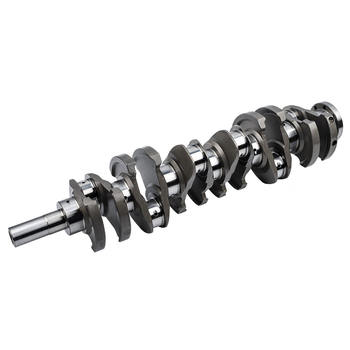
Precision Machining: Bringing the Crankshaft to Life
Regardless of whether it's forged or cast, the raw crankshaft blank is far from its final form. It's rough, oversized, and needs significant machining to achieve the precise dimensions and surface finishes required. This is where the true precision of crankshaft manufacturing shines.
- Rough Machining: The initial stages involve removing excess material. This includes turning the main journals and pin journals (where the connecting rods attach), drilling oil passages, and rough-milling the counterweights. CNC (Computer Numerical Control) machines are indispensable here, ensuring accuracy and repeatability.
- Heat Treatment (Pre-Finishing): Often, after rough machining, the crankshaft undergoes a heat treatment process like normalizing or quenching and tempering. This is done to relieve internal stresses, refine the grain structure further, and achieve the desired hardness and strength properties throughout the component.
- Finish Machining and Grinding: This is the most critical phase for dimensional accuracy and surface finish. The main and pin journals are ground to extremely tight tolerances, often measured in microns. The surface finish is crucial for bearing longevity and minimizing friction. Specialized grinding machines, often equipped with in-process gauging, ensure that every journal is perfectly round and smooth.
- Balancing: A crankshaft must be perfectly balanced to minimize vibration and ensure smooth engine operation at high RPMs. This involves dynamically balancing the crankshaft on a specialized machine. Material is removed from the counterweights (usually by drilling) until the crankshaft is within specified balance tolerances. This step is vital for the engine's overall performance and longevity.
Refining the Heartbeat: Heat Treatment and Finishing Touches
Even after machining and balancing, a crankshaft isn't quite ready for an engine. It needs additional treatments to enhance its durability and surface properties. These finishing touches are crucial for the component's long-term reliability.
Surface Hardening: Building Resilience
The journals of a crankshaft, where they interface with bearings, are subjected to immense friction and wear. To combat this, these surfaces often undergo a surface hardening process. Common methods include:
- Induction Hardening: This technique uses electromagnetic induction to heat the surface of the journals rapidly, followed by immediate quenching. This creates a hard outer layer while leaving the core of the crankshaft tough and ductile. It's a highly localized and efficient process.
- Nitriding: This is a thermochemical process where nitrogen is diffused into the surface of the steel at elevated temperatures. It creates a very hard, wear-resistant layer (nitride layer) without significantly distorting the part. Nitriding is often preferred for high-performance applications due to the excellent fatigue resistance it imparts.
The choice of surface hardening method depends on the material, design, and intended application of the crankshaft. Both methods significantly extend the lifespan of the crankshaft by reducing wear on the journals and improving fatigue strength.
Polishing and Superfinishing: The Ultimate Smoothness
After hardening, the journals are often polished or superfinished. This involves removing any microscopic irregularities from the surface, achieving an exceptionally smooth finish. A mirror-like finish reduces friction between the crankshaft and its bearings, improves lubrication, and further extends the life of both components. This level of precision is a testament to how far crankshaft manufacturing has come.
Ensuring Perfection: Quality Control in Crankshaft Manufacturing
Given the critical role of the crankshaft, quality control is not just a step; it's an overarching philosophy throughout the entire manufacturing process. From raw material inspection to final product verification, every stage is scrutinized to ensure the crankshaft meets stringent specifications.
Material Verification
It starts with verifying the raw material. Spectroscopic analysis confirms the chemical composition of the steel or cast iron. Ultrasonic testing is often used to detect any internal flaws or inclusions in the raw billets or castings before they undergo expensive processing. This early detection saves significant costs and prevents defective parts from progressing.
Dimensional and Geometric Inspection
Throughout the machining process, crankshafts are continuously inspected for dimensional accuracy. Coordinate Measuring Machines (CMMs) are commonly used for highly precise measurements of journal diameters, lengths, runout, and concentricity. These machines can measure complex geometries with incredible accuracy, often down to a few microns. It's worth noting that even a slight deviation can lead to excessive vibration or premature bearing wear in an assembled engine.
Surface Integrity and Hardness Testing
After heat treatment and surface hardening, the hardness of the journals is tested using methods like Rockwell or Vickers hardness tests. Magnetic particle inspection (MPI) or dye penetrant inspection (DPI) are employed to detect any surface cracks or flaws that might have developed during manufacturing or heat treatment. These non-destructive tests are crucial for identifying potential fatigue initiation points.

Dynamic Balancing Verification
The final crucial quality check is the re-verification of dynamic balance. After all machining and surface treatments, the crankshaft is run on a balancing machine one last time to ensure it still meets the required balance tolerances. This guarantees smooth operation and minimizes engine vibration once installed.
The Future of Crankshafts: Innovation and Sustainability
The world of internal combustion engines is constantly evolving, and so too is crankshaft manufacturing. While electric vehicles are gaining traction, the demand for high-performance, efficient, and durable internal combustion engines will persist for many applications, from heavy machinery to specialized automotive uses.
Lightweighting and Performance
One major trend is the continuous push for lightweighting. Reducing the mass of rotating components like the crankshaft directly improves engine efficiency and responsiveness. This is being achieved through optimized designs, advanced materials (like higher-strength steels that allow for smaller cross-sections), and innovative manufacturing techniques. Some high-end applications even explore exotic materials or hollow designs, though these are typically cost-prohibitive for mass production.
Additive Manufacturing's Role
While full-scale additive manufacturing (3D printing) of crankshafts is still largely in the research phase due to material property requirements and scale, it holds promise for prototyping, creating complex internal oil passages, or even producing specialized, low-volume components. The ability to create intricate designs that are impossible with traditional forging or casting could revolutionize future crankshaft design.
Sustainability and Efficiency
Manufacturers are also focusing on more sustainable practices. This includes optimizing material usage to reduce waste, improving energy efficiency in forging and heat treatment processes, and exploring more environmentally friendly lubricants and coolants during machining. The aim is not just to produce a better crankshaft but to do so with a smaller environmental footprint.
In conclusion, the journey of crankshaft manufacturing is a testament to human ingenuity and precision engineering. From the careful selection of raw materials to the intricate dance of forging, machining, heat treatment, and meticulous quality control, every step is vital in creating a component that can withstand the immense forces within an engine. It's a field that continues to evolve, pushing the boundaries of material science and manufacturing technology to deliver ever more powerful, efficient, and reliable engines. The next time you hear an engine hum, remember the unseen powerhouse at its core and the incredible effort that went into its creation.
For more detailed information, please visit our official website:Crankshaft manufacturing
About the author: Dr. Anya Sharma is a materials science engineer with over 15 years of experience specializing in advanced manufacturing processes for automotive and industrial components. Her work focuses on optimizing material properties and production techniques for high-stress applications, including crankshafts and other critical engine parts. She frequently consults on precision engineering and quality assurance, sharing her deep insights into the future of mechanical component production.
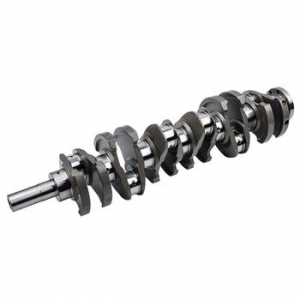 The Unseen Powerhouse: Unravel
The Unseen Powerhouse: Unravel
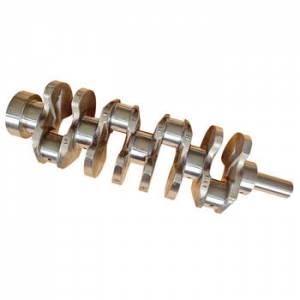 Unlocking Performance: How to
Unlocking Performance: How to
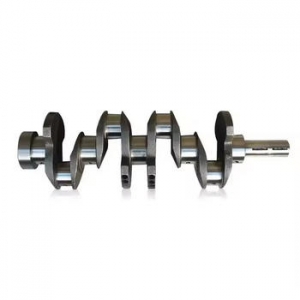 Beyond the Blueprint: A Deep D
Beyond the Blueprint: A Deep D
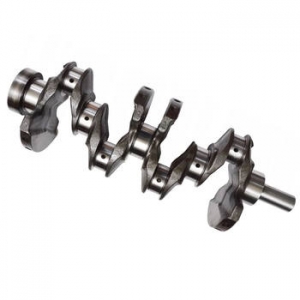 Crankshaft manufacturer
Crankshaft manufacturer
